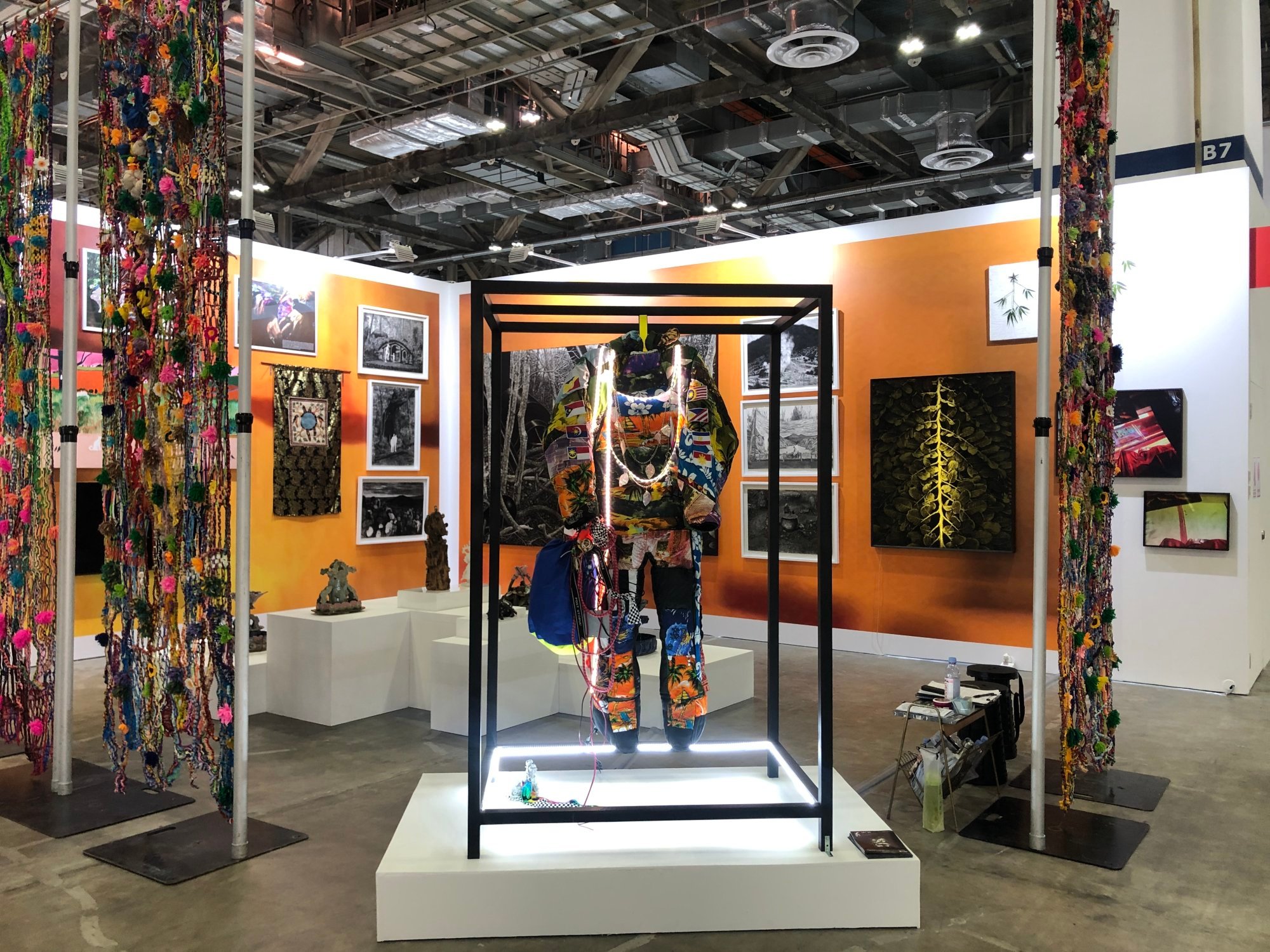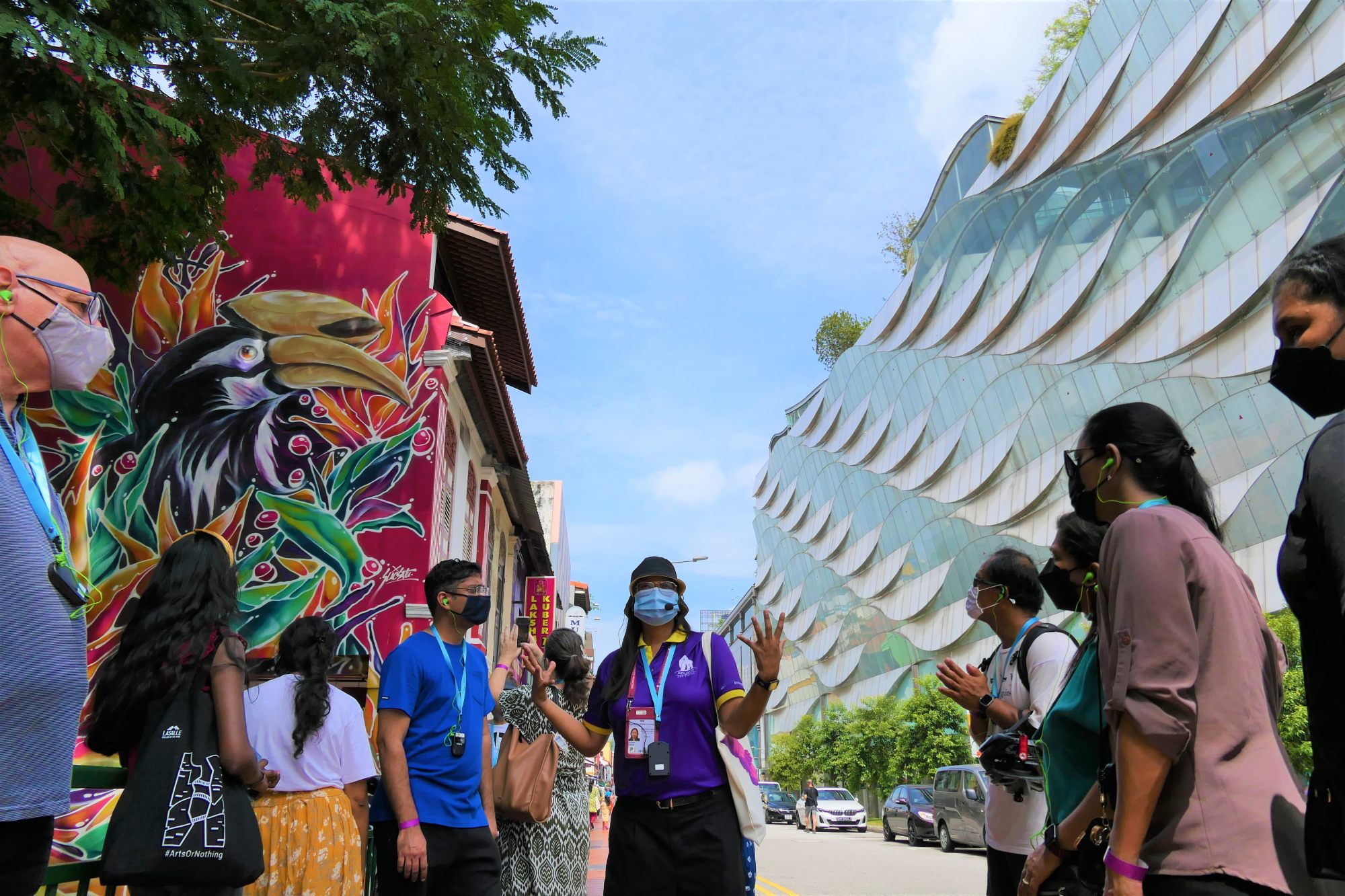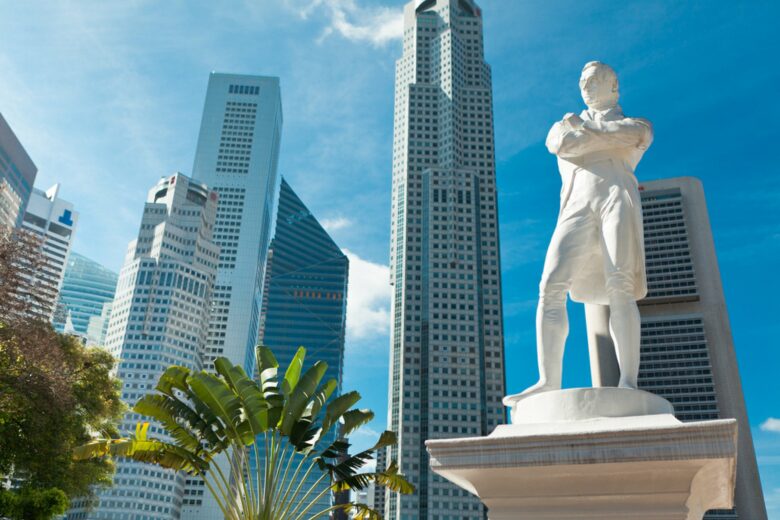- Singapore authorities should step up art education and consultation with relevant stakeholders for creative works, observers say
Recent debates about artwork in
Singapore
have sparked discussion on how the city state’s history should be presented through
art
, prompting observers to argue that a rethink about the approval process could be in order.
Last month, a mural in Chinatown of a
samsui
woman smoking made headlines after the artist, American Sean Dunston, took to his Instagram account to lament that he had been asked to modify his work.
Samsui
is a term for Chinese women immigrants who came to the region from
China
to work as labourers, such as in construction, in the 1920s to 40s. In Singapore, they were commonly seen at various work sites until as late as the 1980s.
Do you have questions about the biggest topics and trends from around the world? Get the answers with
SCMP Knowledge
, our new platform of curated content with explainers, FAQs, analyses and infographics brought to you by our award-winning team.
Dunston said Singapore’s Urban Redevelopment Authority (URA) told him to “get rid of the cigarette”. He quoted URA as saying a complainant argued the woman “looks more like a prostitute than a hardworking
samsui
woman”.
Online users pointed out it was well documented that
samsui
women smoked cigarettes on breaks from their hard labour, and even stored cigarettes under their signature red headgear.
On July 10, the URA and the health ministry said in a joint statement that the mural could remain without modification. However, the authority fined the building owner S$2,000 (US$1,490) for beginning work on the mural without approval. The statement said the mural “does normalise smoking”, even though “most members of the public do not see this as an advertisement for cigarettes”.
Separately, a newly unveiled sculpture in Fort Canning Park of Stamford Raffles, the British founder of Singapore, sparked online debate in May on whether the city state was paying homage to colonial rulers when former colonies elsewhere were denouncing them.
Raffles has been painted in a controversial light in recent years with researchers pointing out, among other things, he was complicit in the kidnapping of women to Borneo for sexual slavery and involved in the Massacre Of Palembang in 1811, which resulted in the murders of 24 Europeans and 63 Javanese soldiers and civilians at the Dutch fort in what is now Indonesia.
Minister for National Development Desmond Lee said in a parliamentary reply on July 6 that Singapore took a “clear-eyed view of our colonial past” and did not “glorify or celebrate it”. Singapore’s colonial past left legacies that it built on to become what it is today, according to Lee.
The art pieces have prompted debate on how much artistic licensing should be accorded for public art that seeks to reflect Singapore’s history.
Hamzah Muzaini, an associate professor at the Department of Southeast Asian Studies at the National University of Singapore, said art should always strive towards historical accuracy. While it can be controversial or politically incorrect, it should be for the right reasons, such as to make people critically think about the past, fill gaps in knowledge about history, or show aspects of history that may have been marginalised.

“It all boils down to the spirit or context of the artwork beyond its content. It should be a version of a story that is true to the artist and what he or she seeks to do.
“Having said that, we do live in a diverse society such that certain topics can be rendered taboo and perhaps should not be aired publicly but this has to be done sensitively and with proper consultation with relevant authorities and members of the community,” said Hamzah.
Lack of art appreciation
Jeffrey Say, an art historian from LaSalle College of the Arts, said in light of the debates, it was timely for the authorities to re-examine regulations for artists.
It could be tricky to figure out the boundaries of what was acceptable for the artist and the Infocomm Media Development Authority, according to Say. In Singapore, IMDA provides licences for arts entertainment events, including art exhibitions.
“There will always be some regulation in Singapore because we have OB markers, on politics, race, religion, gender and sexuality, but as long as artists don’t cross the boundaries in an overt way, they [artists] can still operate,” said Say, referring to out of bounds markers, a golf metaphor used in Singapore to denote what topics are allowed for public discussion.
“As a nation, we aspire to be an arts hub, yet we continue to see these kinds of incidents arising. Perhaps we need to relook at how we can give artists more leeway to navigate the OB markers in Singapore,” he added.
On the
samsui
woman mural, the issue centred around a lack of art appreciation in Singapore, according to Say. “A better understanding of art appreciation would help with comments like the one made about the
samsui
woman looking like a prostitute, which I think was ill-informed.”
“The authorities should refrain from having a knee-jerk reaction to complaints. They need to evaluate the complaint and consult the artist and even members of the art community before they react. We shouldn’t jump at every single complaint,” Say said.
Joseph Nair, honorary secretary of the Singapore Heritage Society, said it would have been preferable if the authorities got feedback from stakeholders who represented
samsui
women, but it was unclear who represented them.
One way to improve the process was for heritage and culture assessments to be carried out on public art installations and buildings in Singapore before working on them, similar to how environmental impact assessments were done, Nair said.
Roger Nelson, an assistant professor of art history at the Nanyang Technological University, said Singapore had a long history of understanding art as a way to foster interaction between different groups and confront challenging issues of the day.
Nelson cited Singapore’s first foreign affairs minister S. Rajaratnam, who in 1965 wrote that local artists “constructively help the government” in tasks including “forging national identity, promoting international goodwill and projecting” Singapore’s image.

“This suggests that artists were seen as a source of ideas and inspiration about creative ways to advance shared interests. Of course, the situation today may be quite different from in the 1960s, but perhaps there are some continuities as well,” said Nelson.
NUS’s Hamzah acknowledged both the
samsui
woman mural and the Raffles statue at Fort Canning can be controversial in different ways. He said: “If they can incite open and honest discussions among us, it is a good sign that Singapore is maturing as a society and not easily resorting to knee-jerk reactions like merely sanitising or whitewashing history.
“We should in turn welcome different opinions about our past, especially if they can make us think – as well as learn – more about our past.”
Nominated Member of Parliament Usha Chandradas, the co-founder of an online art magazine, said Singapore was one of the most connected societies in the world so there was bound to be public scrutiny over all types of issues, not just public art.
She said: “It’s relatively easy to pontificate from a theoretical perspective about ‘ideal’ guidelines and procedures, but the reality is that with something as subjective and emotive as public art, it is difficult to set hard and fast rules that are going to be applicable in every situation.
“The more important thing is for authorities to have the ability to listen to what the public is saying and to respond appropriately.”
On Dunston’s mural, she said while the process was not perfect, the authorities ultimately came up with a solution that “honoured the broad sentiments expressed by the public”.
Chandradas said she was glad the government exercised flexibility. “It is a promising sign that we are maturing as a society in being able to engage with the push and pull of public discourse and that policymakers actively listen to the people.”
More Articles from SCMP
Malaysia’s racial rift: Penang art festival sparks outcry over low Malay representation
Chinese warships near Alaska signal growing naval projection – and a message to Nato
Hong Kong swimming bosses and lawmakers discuss 5-point plan to solve eligibility row
‘We were sent to hell’ – Hong Kong fermented tofu shop nearly 120 years old shuts suddenly
This article originally appeared on the South China Morning Post (www.scmp.com), the leading news media reporting on China and Asia.
Copyright (c) 2024. South China Morning Post Publishers Ltd. All rights reserved.
